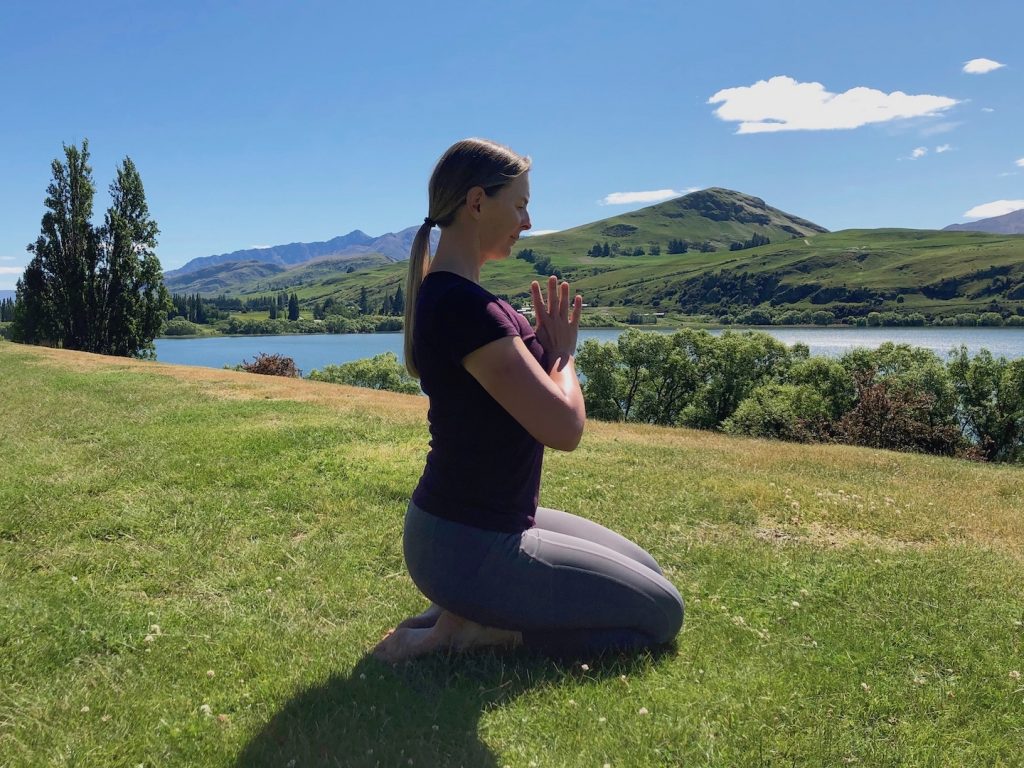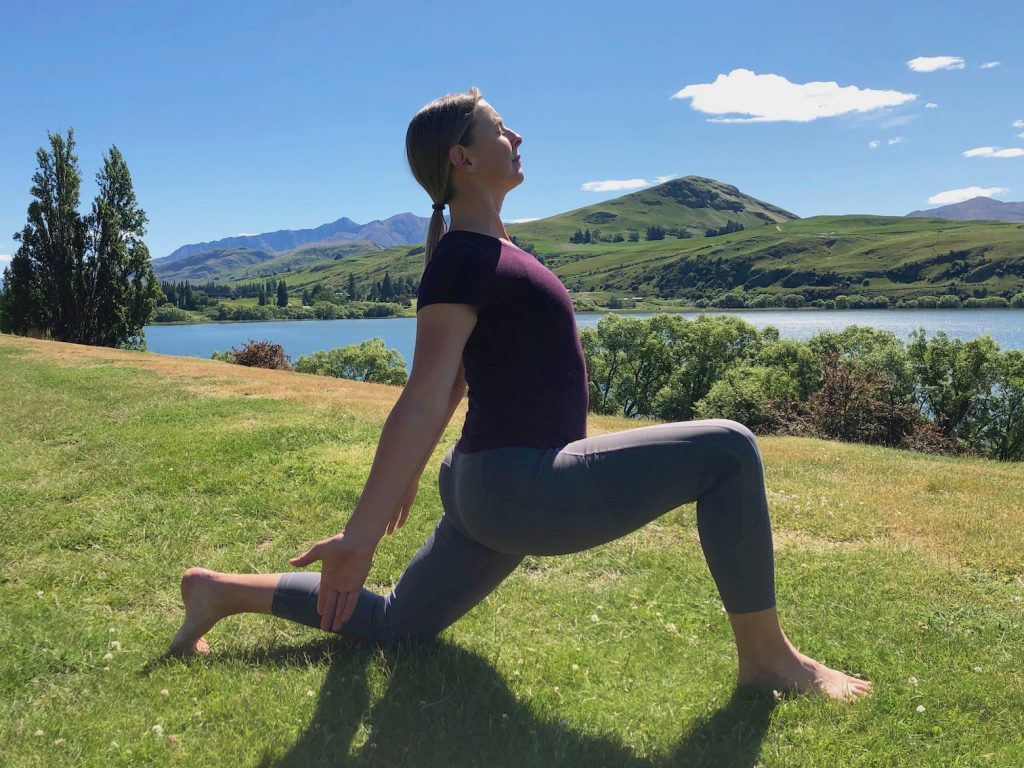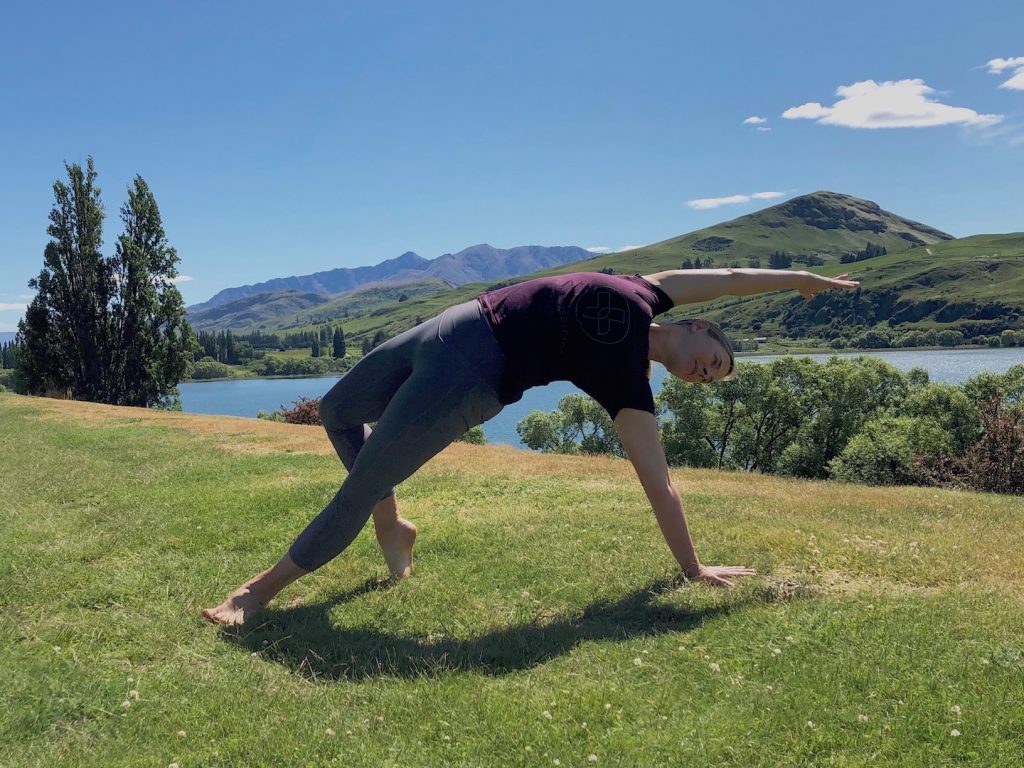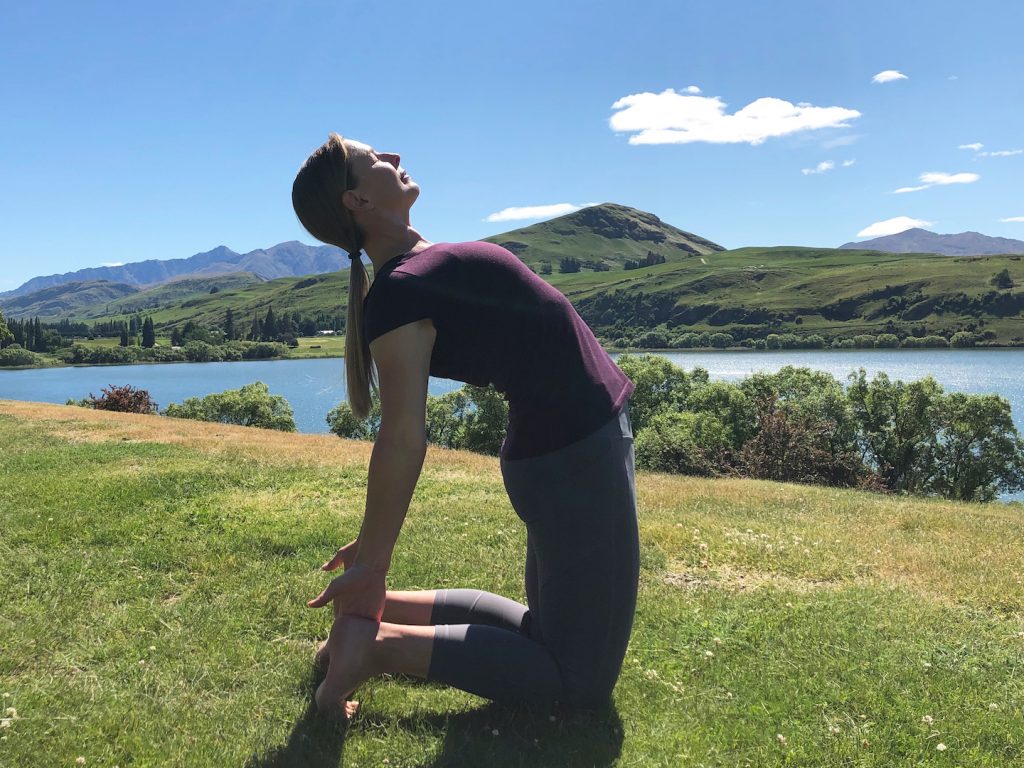The Strength to Surrender: Compassionate Backbends
by Rachel Land | November 29, 2019 8:15 pm
Life has a compressive quality. We are all subject to the downward pull of gravity, and at this busy time of year often find ourselves carrying the weight of stress on our shoulders or, at least in the northern hemisphere, shielding ourselves against cold weather.
The expansive heart-opening poses common in yoga practice offer the perfect antidote. However, many of us arrive on our mats ill-prepared for these poses. We are sitting more than ever before: in front of computers and devices, in our cars, on our couches. This sedentary lifestyle leaves a legacy in our muscles and fascia, including shortened hip flexors and shoulders shifted forward in their sockets, patterns which can make backbends uncomfortable, even confronting, especially when we try to increase our range of motion.
Yoga heart-openers can help reverse these patterns, opening us up to more balanced biomechanics, better breathing, and potentially improved mood and energy. But unless we practice them skillfully, even compassionately, we take our postural habits with us, collapsing into our low back instead of opening our chest as intended.
One of the most well-known of the sage Patanjali’s sutras is 2.46: sthira-sukham asanam, commonly translated to mean that posture should be steadfast and easeful. This is particularly true in heart-openers, where the soft surrender of the chest must be supported by strength in our legs and core.
But how do we find that balance between effort and ease? The key is to find new pathways, like the three key actions outlined below, rather than exploiting habitual ones.
1. Posterior pelvic tilt
Short, tight hip flexors can pull the front rim of our pelvis forward into what is called anterior pelvic tilt. During backbends, anterior tilt increases the amount of extension required by the lumbar spine and can create a feeling of compression there. However if we create posterior pelvic tilt by lifting our pubic bone toward our navel and lengthening our sacrum, we not only take a rare opportunity to lengthen our hip flexors, we also create more space around the low back.
2. Scapula retraction
The heart-opening aspect of backbends comes from expanding our chest, rather than extending our spine. Squeezing our shoulder blades toward each other, an action known as retraction, allows them to act like a scoop behind the heart. It’s the resulting lift of our sternum and broadening of our collar bones that gives backbends their potent benefits.
3. Core support
Our abdominals link these two actions together, integrating the expansiveness of the upper body into the supportive strength of the lower body. Zippering our lower abdominals and knitting our ribs in and down creates an energetic connection between the sternum and the pubic bone. The result is a sense of balance or containment, channelling our backbends into uplift and expansion in the chest, as opposed to compression into the low back.
This simple sequence gives you a chance to try out these actions, allowing you to expand your heart space with compassion.

Hero pose (Virasana) variation
Find a comfortable kneeling position with your hands in prayer position (anjali mudra), resting your hips on your heels (or on a block or two if you need a little more support for your knees). As you inhale, allow your abdomen to expand, tipping your frontal hip points closer to your thighs – creating anterior pelvic tilt. As you exhale, hug your navel toward your spine and scoop your tail, directing your sitbones toward the back of your knees – creating posterior tilt.
Flow back and forth for four or five smooth steady breaths, familiarizing yourself with the sensation and noticing the influence pelvic position has on what you feel in your low back.

Low Lunge (Anjaneyasana) variation
Lift your hips off your heels and step your right foot forward into a low lunge. Stack your right knee above your right ankle, taking a long enough step to bring your left knee behind your left hip.
The position of your back leg will tend to tilt your pelvis forward toward your right thigh, so balance that tendency by drawing your pubic bone toward your navel and lifting your right frontal hip bone away from your right thigh, recreating a some of the posterior pelvic tilt you practiced previously. Notice how that action creates length over the front of your left hip, and more space in your low back.
Now draw your arms behind you, squeezing your shoulder blades toward each other and turning your palms out to open your chest. Breathe into your front ribs, supporting that expansiveness by guiding your low ribs in and down.

Wild thing (Camatkarasana)
Fold forward and plant your palms, stepping your right foot back in line with your left to transition into plank pose. Roll onto your left palm and the outer edge of your left foot, shifting into side plank (vasisthasana). Bend your right knee and step the ball of your right foot behind you, roughly level with your left knee. Then reach your right arm across your chest to catch hold of your left side ribs. Drive down through your left hand and use your right hand to help you roll your heart toward the sky, gliding your left shoulder blade toward your spine. Complete the pose by stretching your right fingertips overhead, creating space from fingers to toes. Expand into a few deep breaths before returning to hero pose to repeat the sequence on the second side.

Camel (Ustrasana)
After moving through the sequence on both sides, come to kneeling with your hips stacked above your knees. Set your feet and knees hip-width apart and tuck your toes under. Lengthen your sacrum and lift your pubic bone toward your navel to create posterior pelvic tilt. Then draw your arms behind you, retracting your shoulder blades and turning your palms out to open your chest.
Tilt back from your knees until your fingertips catch your inner heels, then press out through your hands and meet that outward pressure by magnetizing your heels toward the midline. Create support for your open heart by energetically drawing your pubic bone toward your sternum and knitting your low ribs in and down.
Stay here for another three or four full, deep breaths, poised in the balance between courage and compassion, effort and ease, strength and surrender. When you are ready to move on, use your core and legs to lift you up and out, returning to the kneeling position where the sequence began for a moment of reflection.
As Patanjali outlined centuries ago, one of the core benefits of yoga practice is its capacity to help us create balance in our lives. Case in point – as the modern lifestyle becomes increasingly compressive, yoga heart-openers offer the chance to feel spacious: to access deeper breathing, and to counter the physical effects of sitting. But the lifestyle habits that make backbends helpful also make them a challenge for many of us. Rather than following old patterns and pathways, it benefits us to explore new ones – to learn to balance a soft heart with supportive core and legs.
Source URL: https://yogadigest.com/the-strength-to-surrender-compassionate-backbends/